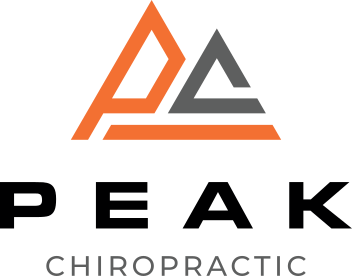You know that feeling when your joints just don't cooperate during your favorite activities? Improving your joint flexibility can make a significant difference, and it's not just about stretching more. It involves a mix of techniques, daily habits, and even what you eat. By exploring effective methods and understanding the underlying principles, you can access a new level of mobility. But what exactly do you need to incorporate into your routine to see real progress? The answers might surprise you.
Understanding Joint Flexibility
Joint flexibility refers to the range of motion in your joints, which is essential for overall mobility and physical performance. It's influenced by various factors, including the structure of your joints, muscle length, and the surrounding connective tissues.
When your joints are flexible, you can move more freely and efficiently, which helps you perform daily activities and exercise without restrictions.
To understand joint flexibility better, think about the role of ligaments, tendons, and muscles. Ligaments connect bones to other bones, while tendons connect muscles to bones. These structures work together to allow your joints to move smoothly.
If any of these components are stiff or tight, your range of motion can be limited, leading to discomfort or even injury.
You should also consider how age, activity levels, and genetics can impact your flexibility. As you grow older, your muscles and connective tissues may become less pliable, reducing your joint flexibility.
On the other hand, individuals who regularly engage in stretching or flexibility exercises often maintain better mobility.
Certain activities, like yoga or Pilates, can enhance your joint flexibility. They focus on controlled movements that promote stretching and lengthening of muscles.
Regular practice can help you develop a better understanding of your body's limits and improve overall joint health.
Benefits of Improved Flexibility
Improved flexibility brings a host of benefits that can enhance your daily life and physical activities. When your joints and muscles are more flexible, you experience greater range of motion. This means you can perform everyday tasks—like bending down to tie your shoes or reaching for items on a high shelf—more easily and without discomfort.
Additionally, improved flexibility can lead to better posture. With increased flexibility in your muscles and joints, your body aligns more naturally, reducing strain on your spine. This can alleviate back pain and help you stand taller, boosting your confidence.
You'll also notice that enhanced flexibility contributes to better athletic performance. Whether you're running, swimming, or playing sports, being flexible allows for more efficient movements and reduces the risk of injuries. You'll be able to push your limits without the constant worry of pulling a muscle or straining a tendon.
Moreover, improved flexibility can benefit your mental well-being. Engaging in flexibility exercises often involves mindfulness and deep breathing, which can reduce stress and promote relaxation. As you become more in tune with your body, you might find yourself experiencing less anxiety and an overall sense of calm.
Lastly, regular flexibility training can accelerate recovery after workouts. Your muscles recover faster when they're flexible, helping you get back to your routine without prolonged soreness.
Embracing flexibility can truly transform the way you move and feel, enriching both your physical performance and mental health.
Effective Stretching Techniques
To fully reap the benefits of enhanced flexibility, it's important to incorporate effective stretching techniques into your routine.
Start with static stretching, where you hold a position for 15 to 30 seconds. This helps to lengthen muscles and improve overall flexibility. Focus on major muscle groups like hamstrings, quadriceps, and shoulders, ensuring you're not bouncing, which can cause injury.
Dynamic stretching is another valuable method. This involves controlled movements that gently take you to the limits of your range of motion. Think leg swings or arm circles. Incorporate dynamic stretches before workouts to warm up your muscles and prepare your joints for activity.
Don't forget about proprioceptive neuromuscular facilitation (PNF) stretching. This technique combines stretching and contracting of the muscle group being targeted. Partner with a friend if you can; while one person holds the stretch, the other pushes against it for about 6 seconds before relaxing and stretching further. This method can greatly enhance flexibility.
Remember to breathe deeply throughout your stretches. Inhale as you prepare to stretch, and exhale as you ease into the position. This not only helps you relax but also allows your muscles to loosen up.
Lastly, consistency is key. Aim to stretch at least three to four times a week. Gradually increase the intensity and duration of your stretches as your flexibility improves.
With these techniques, you'll notice a marked difference in your joint flexibility, leading to better performance in your daily activities and workouts.
Incorporating Movement Into Daily Life
Incorporating movement into your daily routine can greatly enhance your joint flexibility.
Simple stretching routines, active breaks at work, and everyday movement tips can make a big difference.
Let's explore how you can seamlessly add these practices to your life.
Simple Stretching Routines
While you might think that stretching requires a dedicated time slot in your day, integrating simple stretching routines into your daily life can be both effective and easy.
You can take advantage of everyday moments to enhance your flexibility without needing to carve out extra time. Here are some ideas to incorporate stretching into your routine:
- Stretch while you brush your teeth: Stand on one leg and stretch the opposite leg behind you.
- Take stretch breaks during TV commercials: Use those few minutes to do simple neck and shoulder stretches.
- Incorporate stretches into your morning routine: As you wake up, reach for the ceiling and bend side to side.
- Stretch while waiting for your coffee to brew: Try gentle forward bends or ankle rolls.
- Do a few stretches before bed: This can help relax your muscles and prepare you for a good night's sleep.
Active Breaks at Work
Active breaks at work can greatly boost your productivity and overall well-being. Instead of staying glued to your chair, take short, intentional breaks to get your body moving. Stand up, stretch, or take a brisk walk around your office or home. Just five to ten minutes of movement every hour can considerably improve your focus and energy levels.
Consider incorporating simple activities during these breaks. Try leg swings, shoulder rolls, or wrist stretches to relieve tension and enhance flexibility. Even a quick set of jumping jacks or bodyweight squats can invigorate you and sharpen your mind.
Plus, these active breaks help prevent stiffness and discomfort that often arise from prolonged sitting.
If you work in a team, encourage your colleagues to join in. Turn breaks into a fun group activity, whether it's a mini dance-off or a quick walk outside. The social aspect boosts morale and strengthens workplace relationships, all while promoting physical health.
Everyday Movement Tips
Move more throughout your day by finding small opportunities to integrate movement into your routine.
These little changes can make a big difference in improving your joint flexibility and overall well-being.
Here are some practical tips to help you stay active throughout the day:
- Take the stairs: Whenever possible, opt for stairs instead of elevators. It's a great way to stretch your legs and engage your muscles.
- Walk during phone calls: Don't just sit while you chat. Stand up and walk around; you'll feel more energized and focused.
- Set reminders to stretch: Use your phone or computer to remind you to take stretch breaks every hour. This keeps your joints flexible and your muscles relaxed.
- Do household chores: Cleaning, gardening, or even cooking involves movement. Get into the habit of doing these chores actively to keep your body moving.
- Park further away: When you go out, choose a parking spot that's farther from the entrance. Walking those extra steps can enhance your daily activity level.
Nutritional Support for Joint Health
A well-balanced diet plays an important role in supporting joint health and flexibility. When you focus on nutrient-rich foods, you're giving your joints the support they need to function smoothly. Incorporating omega-3 fatty acids, found in fatty fish like salmon and walnuts, can help reduce inflammation around your joints. This anti-inflammatory effect is significant for maintaining flexibility and preventing stiffness.
Don't overlook the importance of antioxidants. Fruits and vegetables, such as berries, spinach, and broccoli, are packed with vitamins C and E, which can protect your joints from oxidative stress. These nutrients help repair damaged tissues and promote overall joint health. Aim to fill half your plate with these colorful options at every meal.
Additionally, consider foods rich in collagen, like bone broth and chicken skin. Collagen is an essential protein that contributes to cartilage structure. Including these foods in your diet can enhance your joint's resilience and flexibility.
Hydration also plays a key role. Drinking enough water keeps your joints lubricated and functioning properly. Aim for at least eight glasses a day to maintain ideal hydration.
Lastly, don't forget about the benefits of whole grains and lean proteins. Quinoa, brown rice, and legumes provide important nutrients for muscle repair and joint support.
Consistency and Tracking Progress
To achieve better joint flexibility, consistency in your routine is essential. It's not just about stretching occasionally; you need to make it a regular part of your life.
By committing to a consistent practice, you'll gradually notice improvements in your range of motion and overall joint health. Tracking your progress will also help you stay motivated and identify areas that need more attention.
Here are some effective strategies to maintain consistency and track your progress:
- Set Specific Goals: Define clear, achievable flexibility goals. Instead of saying "I want to be more flexible," aim for something like "I want to touch my toes within three months."
- Create a Schedule: Dedicate specific days and times for your flexibility training. Treat these sessions like important appointments you can't miss.
- Keep a Journal: Record your daily or weekly progress. Note any improvements, setbacks, or new stretches you try.
- Use Technology: Consider fitness apps or wearable devices that track your flexibility and remind you to stay on course.
- Stay Accountable: Share your goals with a friend or join a group focused on flexibility. Having someone to encourage you can make a significant difference.
Conclusion
To boost your joint flexibility, remember to incorporate consistent stretching techniques and stay active in your daily routine. Don't underestimate the power of proper nutrition and hydration—these play a vital role in joint health. Set achievable goals and track your progress to keep your motivation high. Finally, embrace mindfulness during your stretches to enhance relaxation and effectiveness. By following these tips, you'll be well on your way to improved flexibility and overall joint mobility.



